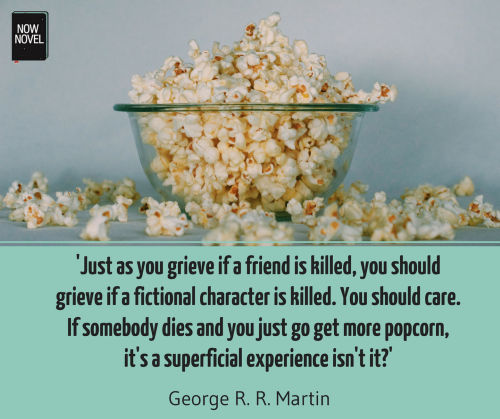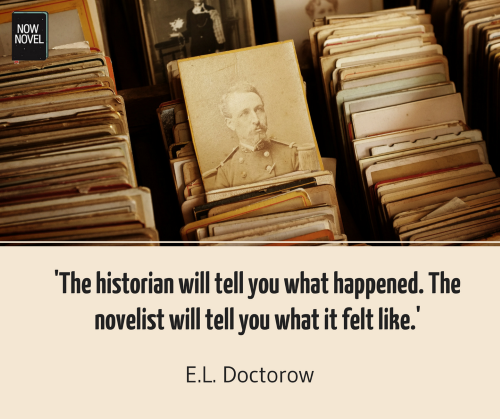Great novel characters share common features: Distinct, authentic voices, character development, clear goals and motivations, strengths and flaws. Here are 15 of our top character creation tips gathered from some of the best writing blogs and websites:
15 character creation tips for strong characterization:
- Give characters clear motivations that drive your story.
- Make each character identifiable in a police line-up.
- Make characters loveable, loathsome and everything between.
- Create interesting dynamics between characters and environment.
- Use secondary characters as foils.
- Create profiles to develop your novel’s characters.
- Deepen characters by incorporating research.
- Show your characters’ views of others.
- Give your character interiority.
- Don’t let characters know every detail just because you do.
- Use contradictions to make your characters complex.
- Use character names to convey subtle implications.
- Avoid using lazy stereotypes.
- Show character motives through interactions.
- Don’t be afraid to change your viewpoint character if necessary.
Let’s explore further:
1: Give characters clear motivations that drive your story
Writing characters who spring to life off the page is partly about giving characters clear motivations. Over at Terrible Minds, Chuck Wendig sums this up eloquently:
‘Characters want things. They need things. They are motivated by these desires and requirements and they spend an entire story trying to fulfill them. That’s one of the base level components of a story: a character acts in service to his motivations but obstacles (frequently other characters) stand in his way.’
For example, many a villian (from C.S. Lewis’ White Witch, Jadis, to Tolkien’s Sauron, desires power; dominion. Their dogged pursuit of greedy goals fuels heroes’ quests to maintain order and justice.
2: Make each character identifiable in a police line-up
This is great advice from Word Painting: The fine art of writing descriptively by Rebecca McClanahan (excerpted by Writer’s Digest here):
“My father is a tall, middle-aged man of average build. He has green eyes and brown hair and usually wears khakis and oxford shirts.”
This description is so mundane […] Can you imagine the police searching for this suspect? No identifying marks, no scars or tattoos, nothing to distinguish him. He appears as a cardboard cutout rather than as a living, breathing character. Yes, the details are accurate, but they don’t call forth vivid images. We can barely make out this character’s form; how can we be expected to remember him?’
Make characters real using details of dress, gait (the way they walk), voice, personality and more. [And get our concise guide, ‘How to Write Real Characters’ to work your way through illustrative examples and practical exercises that will improve your characters.]
3: Make characters lovable, loathsome, and everything between
How do you get readers interested in your characters and how do you make them unforgettable?
Eric Patterson gives this simple and vital advice on animation that applies equally to writing:
‘The viewer should care for or be challenged by the characters.’
To do this give your characters at least one of the following, depending on their role in the story:
- Likable features: These could be positive traits that attract us to people (kindness, compassion, humility, generosity or other)
- Humanizing flaws: What does your character fear? What mistakes are your characters prone to making? What do they need to learn in life most urgently?
- Features that challenge readers: Giving your characters elements that the average person can’t relate to also creates interest. Think of series that have serial killers as protagonists. We still feel tense about their predicaments, even if their behaviour doesn’t fit our own ethical norms. Readers don’t have to like every character. Your protagonist doesn’t necessarily have to embody ‘good’, heroic or noble features. If you want an audience, the first rule is to make your characters interesting

4: Create interesting dynamics between characters and environment
Your characters can be at home in or at odds with their environment.
There’s no reason you have to limit opposition to character vs character conflict. In The Lord of the Rings, for example, Frodo and Sam’s love for their native Shire makes venturing forth on a dangerous quest a much more daunting decision. There are locations throughout the cycle (The Mines of Moria, The Tower of Orthanc, Mordor) where characters’ environs are treacherous.
Texas A&M University’s Writing Center describes using place to writing interesting novel characters:
‘Where does your character live, work, and play? Does your character fit in to the setting or stand out? The setting can help move the story along and define the character. A character living in Idaho who’s from the Caribbean creates an interesting dynamic.’
5: Use secondary characters as foils
Not every character in your novel needs to occupy center-stage. As the university of Ohio’s fiction writing resources state:
‘[A foil is] someone whose character contrasts to that of the protagonist, thus throwing it into sharp relief. In Connie Willis’s “The Last of the Winnebagos,’ Katie Powell serves as a foil to the protagonist David McCombe. Katie chases after David to [relieve] her guilt over killing one of the last surviving dogs on Earth, while David runs away from Katie and from admitting to himself that he, too, is responsible for the dog’s death.’
A quick-witted character could have a dim-witted foil, for example. Or give a wildly imaginative character a literal-minded foil. Cervantes does this to great effect in his famous Don Quixote. The self-named Don attacks windmills, imagining them to be giants, while his befuddled sidekick looks on. Here, a foil (comedy’s archetype of the ‘straight man’ – a straight-laced character who contrasts with the kook) heightens the comedy.
6: Create profiles to develop your novel’s characters
Your characters should be more than the sum of the lines of dialogue you give them and their immediate actions in the story.
The best characters are so vivid you can picture them having a life outside of the start and end of the story. How can you give your character this sense of personal history and future? By creating character profiles:
‘[A character profile] can help flesh out a cardboard character and even make you think about facets of his or her personality that you had not considered before. Character profiles are especially helpful for novels which involve several main characters and for stories which use multiple points of view.’
Make notes on elements such us:
- Where your character was born and grew up
- What your character’s political, philosophical or religious views are
- Your character’s greatest fears and desires
- What your character is most proud and most ashamed of
- What your character values and dislikes most in others
- Stock phrases or physical mannerisms that your character uses – these should be consistent with your character’s background and psychology
7: Deepen characters by incorporating research
If you are writing about characters from a particular historical epoch, research common beliefs, cultural practices and other factual particulars from that time.
A little research can furnish details that will make your characters much more lifelike. As Writing Room says:
‘So you have created the perfect character- a Dragon Slaying Knight; he’s young, handsome, noble and afraid of fire. But if you are a fifty-year old woman living in [the] modern day, do you really know anything about him? You need to research to find out all you can. What were the living conditions like? What was it like for young knights back in medieval times?’
Of course, you’re also free to depart from historical fact, to give your characters your own flavour. Hilary Mantel has been criticized for making her version of Thomas Cromwell too much based on ‘alternative facts’. Yet, as E.L. Doctorow said, ‘The historian will tell you what happened. The novelist will tell you what it felt like.’

8: Show your characters’ views of others
Where novels get especially interesting is where different characters observe different aspects of others. One character might find the loud girl at the bar obnoxious and abrasive while another might find her fun and confident. Ask yourself ‘What does this character’s impression of this other character suggest about themselves’?
Angela Ackerman sums it up thus on her writing blog:
‘Show the POV character’s feelings and reactions to the character he/she is observing.
Also, work in the viewer’s emotional reaction to the character. Is the narrator impressed? Intimidated? Fearful? Attracted to them?’
In a multi-character novel, showing characters’ different interpretations of each other this way truly helps to build a sense of complex character psychology and multiple perspectives.
9: Give your characters interiority
What do we mean by ‘interiority’? Your characters have inner worlds that not everyone they encounter has access to.
Think about how your character sees herself versus other people’s impressions and assumptions. WikiHow’s article on describing characters elaborates:
‘You need to know your character in and out to make decisions about what to present. Think about how they see themselves and how others would perceive them. Do these images match or clash?’
We have in-depth look at interiority in this post.
10: Don’t let characters know every detail just because you do
As writers we need to sometimes consciously construct boundaries and distinctions between ourselves and our characters.
You might know every detail about your characters’ motivations, their pasts and futures, but your characters don’t need to (and perhaps shouldn’t) share your own omniscience.
Sometimes our own decisions and behaviours surprise or unsettle us. Here’s what author Justine Musk says:
‘There are things we know about ourselves, and that other people know about.
There are things we know about ourselves that other people don’t know about.
[…] The character might think he’s being clever and manipulative, for example, when actually he’s quite transparent.’
11: Use contradictions to make your characters complex
This is great character-writing advice from Becca Puglisi. In a guest post for Write to Done, Puglisi says:
‘Many grandmothers are doting, but what if they’re also manipulative and self-serving?
Create unusual, surprising characters by giving them traits that don’t always go together.
12: Use character names to convey subtle implications
Many names have explicit meanings (Sophia, for example, means ‘wisdom’). When naming your characters, you can add extra layers of meaning by giving them symbolic names. Try names that relate to their story function or personalities. Glen C. Strathy says:
‘You can follow in the footsteps of Charles Dickens and other writers and create character names that convey something about your characters’ personalities. Again, “baby names” websites will tell you what various first names mean, so you can choose ones that fit your characters’
13: Avoid using lazy stereotypes
Stereotypes are at best untrue and at worst explicitly offensive.
In writing novel characters, do your best to avoid characters such as the ‘wise ethnic person’ who gives your protagonist an important, cryptic message. If you must have this scene, think about how you can undercut the cliché of it.
For example, the ‘wise indigenous’ character might be fully aware that’s how your protagonist sees them and could thus play them for a fool. Lucy V Hay at Bang 2 Write says:
‘Know the difference between stereotype and ARCHETYPE.’
An archetype is a character who is a universal, mythic character. The warrior, for example, or the faithful, loyal friend. Using characters such as these does not necessarily make assumptions about entire groups of people based on bias or ignorance, unlike stereotyping.
14: Show character motives through interactions
Rather than say ‘She was jealous of her step-daughter because of the close bond between the child and her husband’, show this jealousy in the interactions between step-mother and daughter.
As New York Writers Workshop faculty member Laura Zinn Fromm writes:
‘Take your characters to parties, gas stations, baseball games, yoga classes and other planets, and make them whisper, yell, confess and interact with other characters. Show the characters’ motives through actions with other characters.’
15: Don’t be afraid to change your viewpoint character if necessary
Sometimes creative blocks can be solved by exploring the voice of a different character in your novel.
Think of how the introductory paragraph of a chapter or essay is often just filler or preparatory work for the real story that starts at paragraph two. Character can be the same – the character you thought was your main character to begin might not be as interesting as another, more complex cast member.
Here is Creative Writing Now’s advice:
‘Is there a character who’s stealing the show from your main character? A character who intrigues you more? Whenever this character comes on stage, the writing flows, and the scene comes to life.
Maybe it’s your character’s funny best friend … [or]her boyfriend. Maybe it’s even your character’s enemy.
Consider LETTING this character steal the show. Change your story around so that this character becomes the focus.’
Join Now Novel and get constructive feedback on your characters and create detailed character profiles for your story using the Idea Finder.


19 replies on “Novel characters: 15 top character creation tips”
This article is fabulous! As I get more serious about producing publishable works, I find my characters seriously lack depth. I immediately made a page for my characters asking each of these questions about them. I’ve used several other checklists in the past, but this is the best I’ve found on character essentials. Thank you so much!
Hi Julian, thanks so much. It’s a pleasure! I’m glad you found some praxis in it and that it helped. B.
At the moment, I am working on my first novel. I’ve already had some notable publishing success with non-fiction, as well as short story fiction. That said, I am finding the challenge of writing a novel to be incredibly overwhelming and sometimes scary. It is a day-by-day process…very daunting. Now Novel is the first website I keep coming to for advice. I love your posts!!! Keep them coming!!!
Thank you so much, Pamela. Best of luck with your novel! Breaking the task into smaller increments really helps.
I just got Scrivener and am going through the training guide right now. I had doubts about how much software could help me…but I’m actually really excited about it! I could quite wrap my head around how to organize and manage all the smaller increments. But this software looks like it may be a game changer…
Glad to hear that, Pamela! Let me know how you find it.
Great advice! I especially like #13. Stereotypical characters are not only bad for your reader, but they’re also very boring to write.
You’re right, Desiree. Like the saying goes, ‘No tears in the writer, no tears in the reader’; the same could be said of boredom.
There are lots of useful tips on this one website. The articles are not too long but they have good tips that have solved many of my problems in writing.
Glad to hear that, Kam. Thanks for reading!
Last advice might be the one I was searching for, thanks!
Glad to hear that. It’s a pleasure, Rasmus.
It’s always challenging to work with the character. Sometimes characters become so much independent that you have to change your first idea and follow your hero.
dumb i want to know how to write a developed character
I’m sorry to hear this wasn’t helpful, Courtney. We have two articles on developing characters specifically here and here. Good luck.
Thanks for good tips
It’s a pleasure, JP. Thank you for reading our blog.
Just because something was not specifically helpful to you and what you were looking for does not make it, as you say it, Dumb. As you continue on in your writing, you may find that you need some help with things that this article has addressed. I hope that in the future you are not so quick to dismiss something as lesser.
Happy writing!
Thanks so much for your comments! Much appreciated.